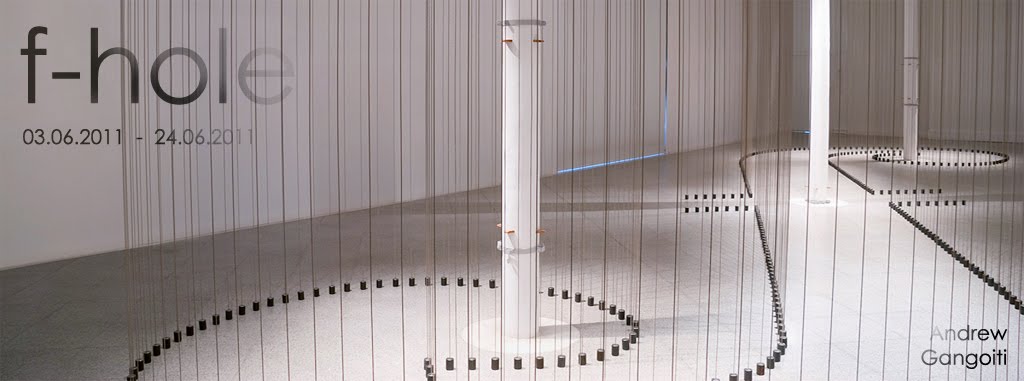Andrew's violin
An image is not a substitute for anything
Louise Lawler
This is possible in a large total installation: the absorbed, distracted spectator walks around it slowly,
observes, moves away, reflects and moves closer again. the peculiar atmosphere
helps him concentrate, delve deep into his memory and move from one level of his thoughts to another. Because a well-designed installation must work on every level: from the most banal and profane to
the most intellectual and spiritually elevated.
Ilya Kabakov
Miguelangelo Buonarroti removed the stone that was unnecessary so that the image inside could touch the space and Eduardo Chillida filled the interior of the stone with air. Between both proposals, there have been many works and philosophies of art that take space as a point of reference. Even painting, the two-dimensional art par excellence, has insistently sought to fill the canvas with space and also construct a theory of it. Referring back to the dutch masters or to Velázquez is the easiest way of seeing these, let's be frank, artistic obsessions.
In other directions, some creators have sought what has been considered as a total work, that which brings together every art form under one umbrella. When the filmmaker arrived, there were those who thought that the road had been opened to achieve image in movement, sound and a close bond with reality. However, as on so many other occasions, it was merely a new proposal, with a new form, with a completely new tool. However, what was important was the purpose, the same as when photography arrived, or performance or cubism or futurism… without considering other lucubrations, all these initiatives include an attempt at pursuing a pipe dream, perhaps precisely because it is known to be a utopia.
In other directions, some creators have sought what has been considered as a total work, that which brings together every art form under one umbrella. When the filmmaker arrived, there were those who thought that the road had been opened to achieve image in movement, sound and a close bond with reality. However, as on so many other occasions, it was merely a new proposal, with a new form, with a completely new tool. However, what was important was the purpose, the same as when photography arrived, or performance or cubism or futurism… without considering other lucubrations, all these initiatives include an attempt at pursuing a pipe dream, perhaps precisely because it is known to be a utopia.
